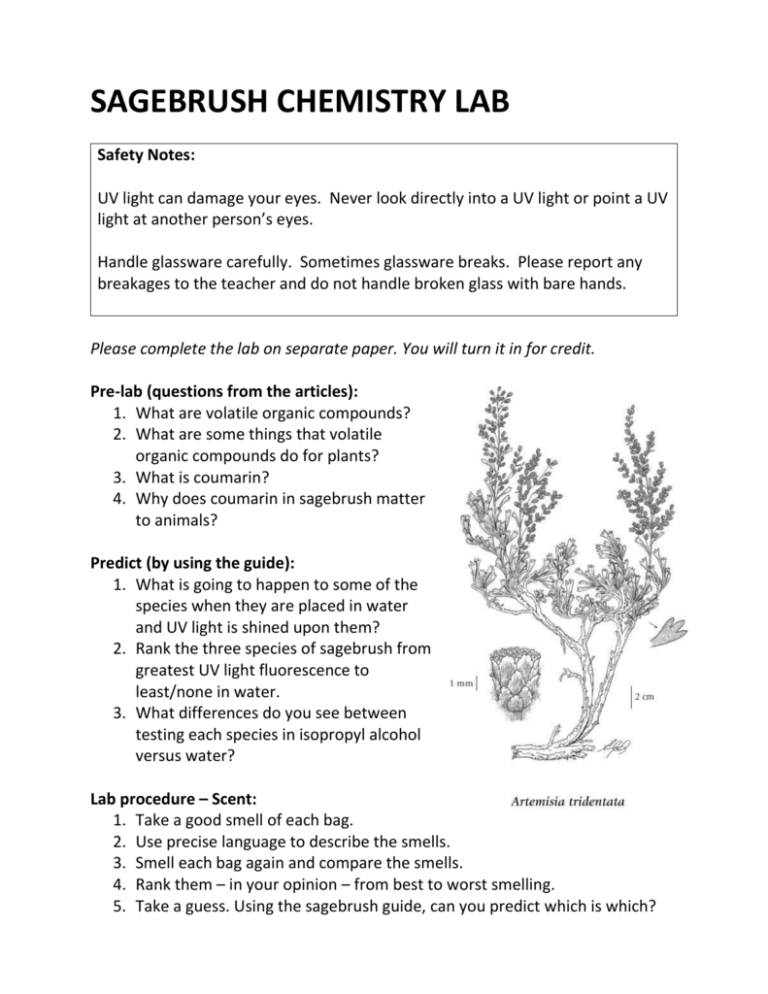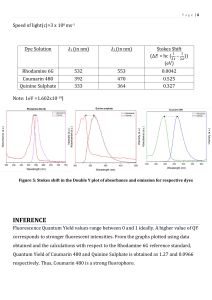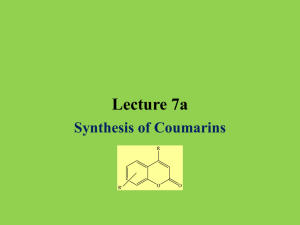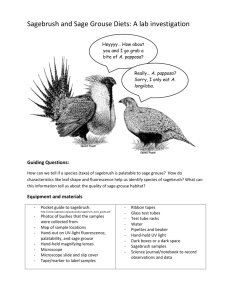Lab procedure – UV light fluorescence in water
advertisement

SAGEBRUSH CHEMISTRY LAB Safety Notes: UV light can damage your eyes. Never look directly into a UV light or point a UV light at another person’s eyes. Handle glassware carefully. Sometimes glassware breaks. Please report any breakages to the teacher and do not handle broken glass with bare hands. Please complete the lab on separate paper. You will turn it in for credit. Pre-lab (questions from the articles): 1. What are volatile organic compounds? 2. What are some things that volatile organic compounds do for plants? 3. What is coumarin? 4. Why does coumarin in sagebrush matter to animals? Predict (by using the guide): 1. What is going to happen to some of the species when they are placed in water and UV light is shined upon them? 2. Rank the three species of sagebrush from greatest UV light fluorescence to least/none in water. 3. What differences do you see between testing each species in isopropyl alcohol versus water? Lab procedure – Scent: 1. Take a good smell of each bag. 2. Use precise language to describe the smells. 3. Smell each bag again and compare the smells. 4. Rank them – in your opinion – from best to worst smelling. 5. Take a guess. Using the sagebrush guide, can you predict which is which? Lab procedure – UV light fluorescence in water: 1. Get three clean test tubes and a test tube rack. 2. Mark the test tubes 1, 2, 3. 3. Using a graduated cylinder, measure 10 mL of water into each test tube. 4. Crush (roll between your fingers) and place a small and equal quantity of each sagebrush sample of 1, 2, and 3 into its numbered test tube. a. Appx. 10 leaves of sample #1 b. Appx. 3 leaves of sample #2 c. Appx. 5 leaves of sample #3 5. Cover the end of the test tube with your thumb and shake it vigorously for 30 seconds. Make sure you rinse and dry your thumb (or use a different person) between each sample so you don’t cross-contaminate samples. 6. Wait 2 minutes. 7. Shine the UV light into each test tube and use the guide to rank the intensity of the fluorescence. Record your data. 8. Clean your test tubes. You need to use a drop of soap and the scrub brush so no chemicals/oils are left behind that may contaminate future samples. Lab procedure – UV light fluorescence in 70% isopropyl alcohol: NOTE: It sometimes takes an hour or more for a reaction to take place in isopropyl alcohol, so these samples have been set up for you already and will be used by all class periods. Please do not dump out the samples. 1. Examine the glass vials in the tubs marked sample 1, 2, and 3. Please do not mix up the samples. 2. Shine the UV light into each test tube and use the guide to describe and rank the intensity of the fluorescence. Draw conclusions: 1. Which species is sample 1? How does chemical evidence of coumarin and volatiles support your thinking? 2. Which species is sample 2? How does chemical evidence of coumarin and volatiles support your thinking? 3. Which species is sample 3? How does chemical evidence of coumarin and volatiles support your thinking? Post lab: 1. Which test (scent or UV) seemed to be the most reliable indicator? Why? 2. Which test (scent or UV) seemed to be the least reliable indicator? Why? 3. What are some other characteristics of plants that we could use to help us identify species?











